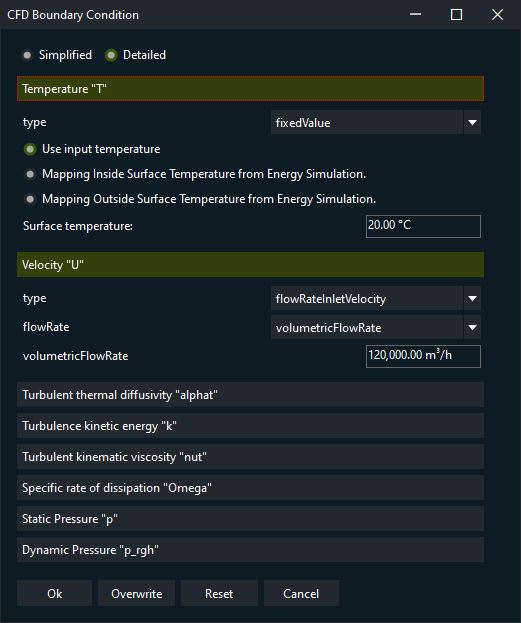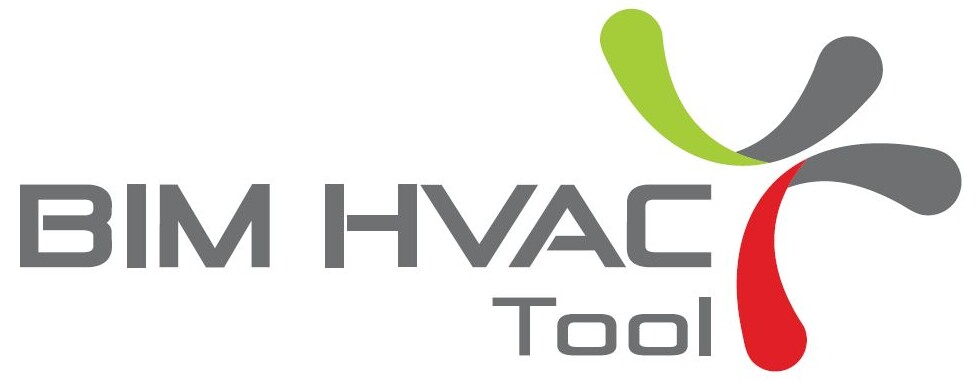
CFD in building technology has never been so easy.
Download
BIM HVACTool Fluid Package:
You can download the BIM HVACTool Fluid Package for windows 64bit here:
Would you like to learn the first steps on how to set up an OpenFOAM simulation using BIM HVACTool? Then take a look at the video on YouTube at your leisure:

Outdoor Simulation
For outdoor flow, you're typically interested in wind and temperature distribution around your building or you want to know the pressures and speeds that occur on the facade. For wind studies, you have the option to use a round wind mesh as well as the standard BlockMesh. You import your weather data and analyze the climate. Then you set up the wind as an Atmospheric Boundary Condition and simulate your case.

Indoor Simulation
Many of your simulations will likely be indoor simulations, meaning the room is closed off from the atmosphere. In this case, you only need a background mesh. The BIM HVACTool interface in OpenFOAM uses the BlockMesh tool. The BlockMesh is recognizable by the blue translucent box that is automatically generated when you load a 3D model. The final mesh generation is done using the SnappyHexMesh tool. The BIM HVACTool also helps with exporting the correct settings for this tool.
Boundary Conditions:
Thanks to the XML technology within the software, you can easily adjust or add new boundary conditions. The usual boundary conditions for building simulation are supported. Thanks to the drag & drop technology, you can easily set the boundary conditions using the component catalog. The software detects it and selects the best standard, no matter which solver you have set.
The boundary conditions are simplified and divided for experts. The software tries to make your work as easy as possible.



Use of Solvers:
The tool supports most solvers for building technology as well as general solvers for CFD.
The tool helps you with the solver selection. Select the physical properties you need for the simulation and the right solver will be suggested to you.
Support Meshing Tools:
Support BlockMesh: BlockMesh is a tool in OpenFOAM that generates a structured mesh. lockMesh is a good starting point for simple internal flow simulations where a high-quality mesh is not necessary.
Use of snappyHexMesh for complex meshing. snappyHexMesh is a tool in OpenFOAM that generates unstructured hexahedral meshes. It is commonly used for complex geometries and is more suitable for simulations where high accuracy is necessary. It works by refining a coarse mesh using a combination of snapping, layer addition, and edge-collapse algorithms to achieve high-quality meshes with minimal cell skewness and aspect ratios. snappyHexMesh is a more advanced mesh generation tool compared to BlockMesh and requires a more thorough understanding of mesh generation techniques and parameters
cfMesh is an alternative to the standard mesh generation tools used in OpenFOAM, such as BlockMesh and SnappyHexMesh. It uses a different approach to generate high-quality meshes for computational fluid dynamics simulations.




Math in OpenFOAM / BIM HVACTool
fvSchemes in OpenFOAM is a numerical discretization scheme used in computational fluid dynamics simulations. It is used to determine how to approximate the numerical solution of partial differential equations (PDEs) that describe fluid flow. The fvSchemes define how to discretize the flow variables (such as velocity, pressure, etc.) and how to calculate their derivatives in space and time.
They also determine the numerical stability, accuracy, and convergence of the simulation. There are various types of fvSchemes available in OpenFOAM, including first-order upwind, second-order upwind, and central difference schemes, among others. The choice of fvScheme depends on the specific application and the desired balance between computational cost and accuracy.
fvSolution in OpenFOAM is a file that contains information about the numerical solver and the solution algorithm used in computational fluid dynamics simulations. It specifies the numerical method used to solve the partial differential equations (PDEs) that describe fluid flow, and includes information on how to control the solution process, such as the convergence criteria and iteration limits.
The fvSolution file also provides control over various aspects of the solution process, including the time-stepping algorithm, linear solvers, and preconditioners. It enables the user to choose appropriate solvers and algorithms based on the specific requirements of their simulation, and to adjust the solution process to ensure accurate and efficient solutions. In OpenFOAM, the fvSolution file is part of the case setup and must be specified for each simulation.
The information contained in the fvSolution file is critical to the success of the simulation, as it determines the accuracy, speed, and stability of the numerical solution.


Post Processing with BIM HVACTool
In fluid simulation, post-processing refers to the set of techniques used to refine or enhance the final output of a simulation. In the BIM HVAC tool software, you have the opportunity to evaluate your simulation and analyze the results using animations and VR.
